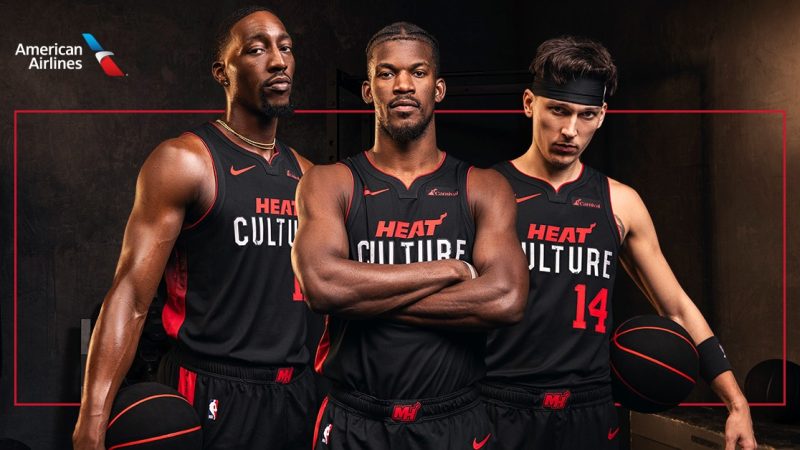The Miami Heat has a storied history in the NBA, and much of its success can be attributed to key trades that reshaped the team’s roster. These trades not only brought talent and experience but also contributed to the Heat’s championship runs and established them as a formidable force in the league. This article will explore 10 pivotal trades that transformed the Miami Heat, detailing how each move played a significant role in the team’s evolution.
Miami Heat: The Shaquille O’Neal Trade (2004)
In 2004, the Miami Heat made a blockbuster trade with the Los Angeles Lakers, acquiring Shaquille O’Neal. This trade instantly elevated the Heat’s status, bringing them a dominant presence in the paint. With Shaq’s arrival, the team made a deep playoff run, leading to an NBA Championship in 2006. His leadership and experience were invaluable to the Heat’s success.
The Goran Dragic Trade (2015)
The acquisition of Goran Dragic in 2015 from the Phoenix Suns provided the Miami Heat with a versatile point guard. Dragic’s ability to drive to the basket and create plays for others helped the Heat maintain their competitiveness post-LeBron James. He became a key figure in the Heat’s success and played a crucial role in their 2020 NBA Finals appearance.
The Jimmy Butler Trade (2019)
In 2019, the Miami Heat acquired Jimmy Butler in a sign-and-trade deal with the Philadelphia 76ers. This trade marked a turning point for the Heat, as Butler’s work ethic and leadership instantly transformed the team’s culture. His fierce competitiveness and ability to take over games made him the face of the franchise, leading the Heat to the 2020 NBA Finals.
The Alonzo Mourning Trade (1995)
The Miami Heat’s trade for Alonzo Mourning in 1995 was a game-changer. Mourning’s intensity and shot-blocking ability brought a new level of toughness to the Heat. He became a cornerstone of the franchise, leading them to multiple playoff appearances and establishing the team’s defensive identity. His trade was pivotal in the Heat’s early success.
The Tim Hardaway Trade (1996)
In 1996, the Miami Heat acquired Tim Hardaway from the Golden State Warriors. Hardaway’s scoring and playmaking abilities were exactly what the Heat needed to complement Mourning. His crossover dribble and leadership on the court played a significant role in the Heat’s success in the late ’90s, leading to deep playoff runs and multiple All-Star appearances.
The Ray Allen Trade (2012)
While not a traditional trade, Ray Allen’s acquisition through a sign-and-trade in 2012 had a massive impact on the Miami Heat. His clutch shooting and veteran presence added depth to the Heat’s roster. Allen’s iconic three-pointer in Game 6 of the 2013 NBA Finals helped the Heat secure their second consecutive championship, cementing his place in Heat history.
The Mike Bibby Trade (2011)
The Miami Heat acquired Mike Bibby in 2011 to bolster their backcourt during their first championship run with the “Big Three.” Bibby’s veteran experience and three-point shooting provided depth to the Heat’s roster. Although he played a supporting role, his contributions were vital in the Heat’s 2011 NBA Finals appearance and playoff success.
The James Posey Trade (2005)
The 2005 trade for James Posey brought much-needed defense and versatility to the Miami Heat. Posey’s ability to guard multiple positions and hit clutch three-pointers made him a key contributor to the Heat’s 2006 championship team. His role as a “glue guy” was instrumental in the Heat’s success during that era.
The Lamar Odom Trade (2003)
In 2003, the Miami Heat traded for Lamar Odom, a versatile forward from the Los Angeles Clippers. Odom’s unique skill set allowed him to play multiple positions, giving the Heat flexibility in their lineups. While he was only with the Heat for a short time, his trade laid the groundwork for future moves, including the acquisition of Shaquille O’Neal.
The Eddie Jones Trade (2000)
The Miami Heat’s trade for Eddie Jones in 2000 brought a reliable scorer and defender to the team. Jones’s three-point shooting and defensive skills helped the Heat stay competitive during a transitional period. He became a steady presence on the court and provided leadership to the young players, solidifying his role in the Heat’s history.
Conclusion
These 10 key trades transformed the Miami Heat, shaping the franchise’s trajectory and contributing to their championship successes. Each trade brought unique skills, leadership, and experience to the team, laying the foundation for the Heat’s storied legacy. As the team continues to evolve, these trades remind us of the critical role strategic moves play in building a successful NBA franchise.
FAQs
1. How many NBA championships has the team won?
The team has won a total of three NBA championships. Their first title came in 2006, followed by back-to-back championships in 2012 and 2013. These victories were significant milestones in the franchise’s history.
2. Who are some of the franchise’s most iconic players?
Some iconic players include Dwyane Wade, LeBron James, and Shaquille O’Neal. These athletes played pivotal roles in the team’s championship runs and are celebrated for their contributions. They have left lasting legacies on the franchise.
3. What is the team’s home arena, and where is it located?
The team’s home arena is the Kaseya Center, previously known as the American Airlines Arena. It’s located in downtown Miami, Florida, along Biscayne Bay. The venue is known for its electric atmosphere during games.
4. What is the team’s signature style of play?
The team’s style of play focuses on aggressive defense, teamwork, and a fast-paced offense. They are known for their strong work ethic and resilience, often outworking opponents. This style has contributed to their sustained success over the years.
Q5. Who is the team’s head coach?
The head coach is Erik Spoelstra, one of the longest-tenured coaches in the NBA. He has led the team to multiple NBA Finals appearances and championship victories. His coaching style emphasizes discipline and adaptability.
Also read: LIGHTS FOR A GYM: 10 MUST-HAVE ILLUMINATORS FOR MAXIMUM PERFORMANCE









